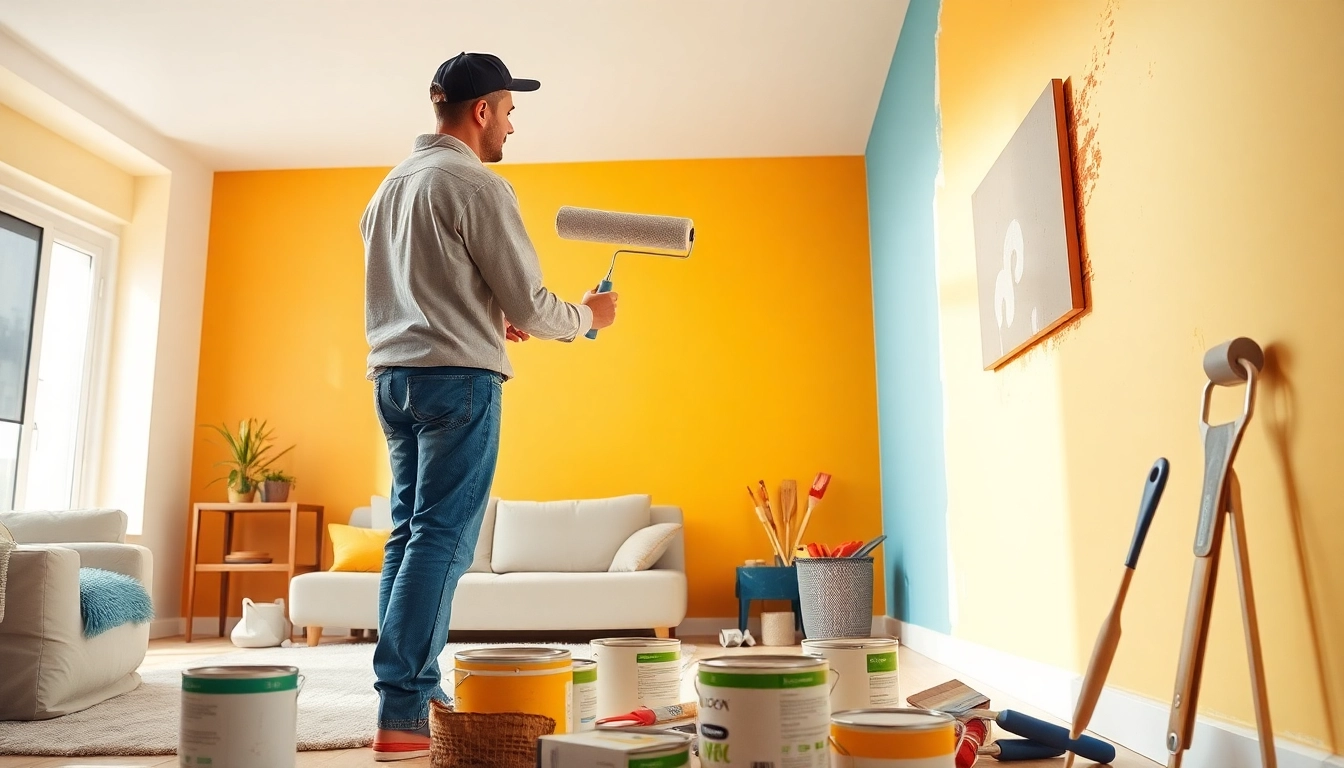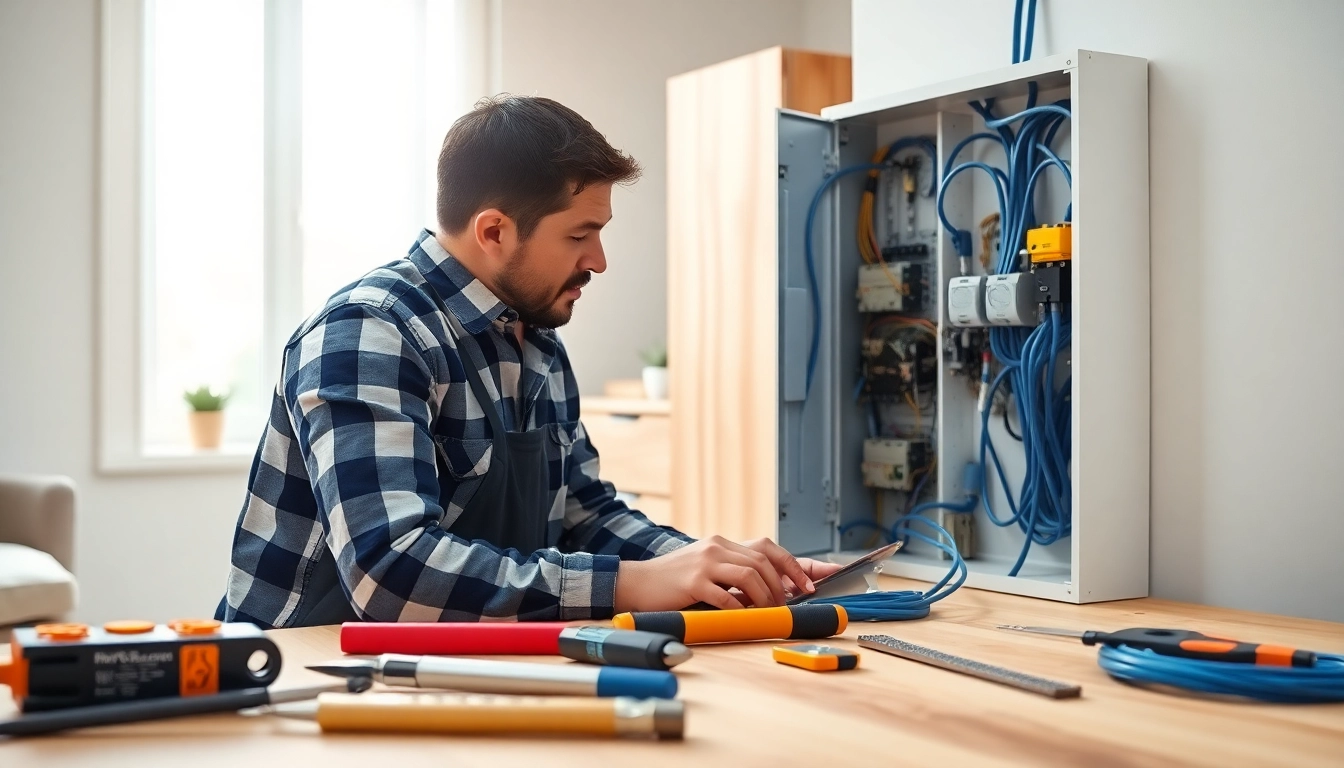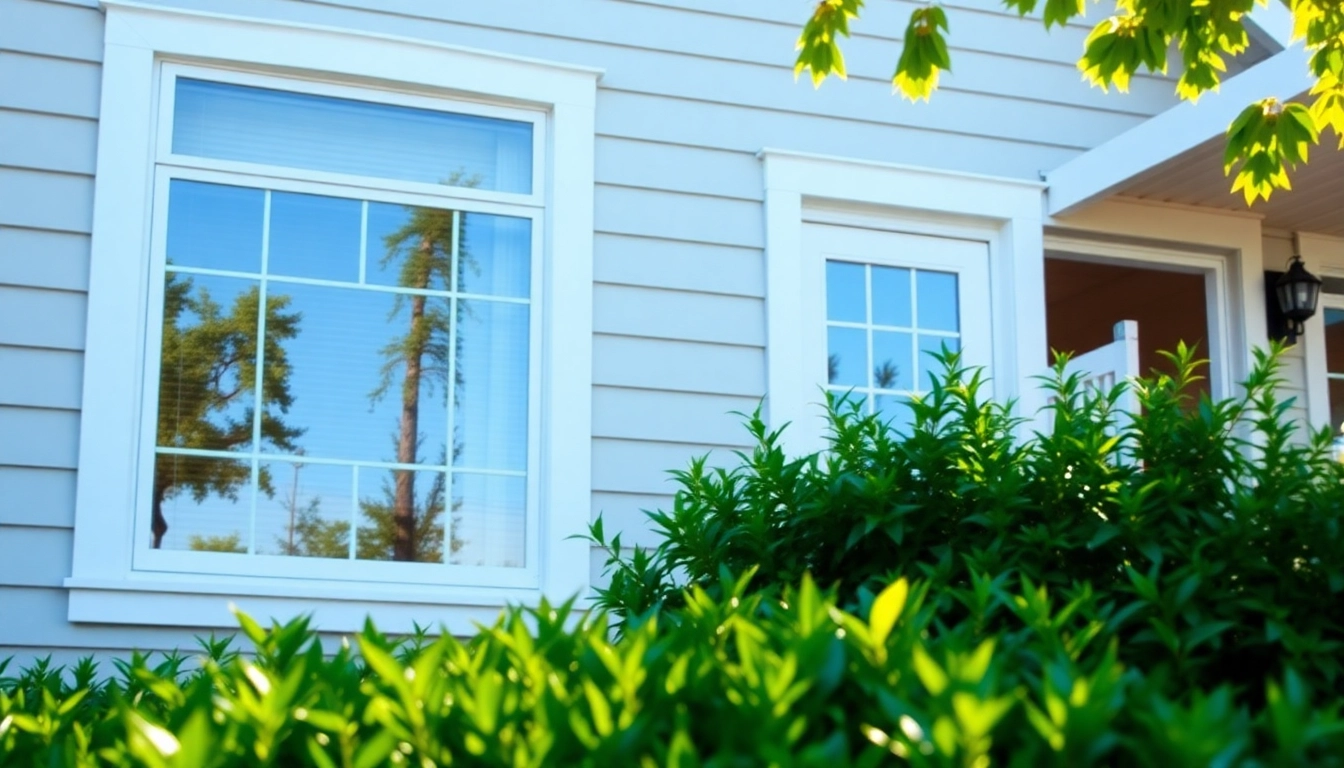Introduction to Interior Painting
Interior painting is far more than just applying paint on walls; it’s about transforming spaces and enhancing the ambiance of your home. Whether you are looking to freshen up a room or planning to undertake a large-scale renovation, understanding the nuances of interior painting is essential. In this comprehensive guide, we will explore the fundamentals of interior painting, ensuring you have the knowledge and skills to achieve a flawless finish.
Understanding the Importance of Interior Painting
Interior painting serves several important functions. Firstly, it protects surfaces from wear and tear, moisture, and other environmental factors, thereby extending the lifespan of your walls and fixtures. Secondly, color and finish can dramatically affect the mood and aesthetic of a room. Additionally, a well-executed paint job can increase the value of your home, making it more appealing to potential buyers. Ultimately, the aesthetic and protective qualities of interior painting play a central role in home maintenance and design.
Key Elements of Successful Interior Painting
Successful interior painting hinges on four key elements: preparation, technique, materials, and maintenance. You must start with thorough preparation to ensure adherence and longevity. Employing the right techniques during the application process will guarantee an even and professional appearance. Utilizing appropriate materials tailored for your specific project types—whether it’s paint, brushes, or tools—is crucial. Lastly, regular maintenance practices will keep your painted surfaces looking fresh and vibrant.
The Role of Color in Interior Painting
The color of your walls can set the tone for your entire home. Each hue evokes different emotions and can alter perceptions of space. Lighter colors can make a room feel larger and more open, while darker shades can create an intimate and cozy atmosphere. Understanding color theory, including complementary and analogous color schemes, can greatly enhance your interior design choices. Furthermore, trends in color can influence decisions; consider looking at thought leaders in design for inspiration on contemporary palettes.
Preparing for Your Interior Painting Project
Essential Tools and Materials for Interior Painting
Before you begin painting, assembling the right tools and materials is paramount. Essential tools include paintbrushes, rollers, trays, painter’s tape, drop cloths, and ladders. High-quality brushes and rollers can make a significant difference in the finish quality. Additionally, you will need to consider paint—the type and finish can affect not only the appearance but also the wearability of the paint job. Investing in quality tools will pay off in the end, producing a more professional look.
Pre-painting Checklist: What to Consider
To ensure a smooth painting process, follow this pre-painting checklist:
- Assess if walls need patching or priming.
- Choose your color scheme based on mood and function.
- Plan for ventilation during and after painting.
- Gather safety equipment, including masks and goggles.
- Clear the area of furniture and belongings.
Taking time to prepare will minimize complications and interruptions during painting.
Choosing the Right Paint and Supplies
Choosing the correct paint is crucial for both aesthetic and practical outcomes. Consider factors such as:
- Type of Paint: Options generally include latex (water-based) and oil-based paints. The former dries quickly, while the latter offers durability but has a longer drying time.
- Finish: The finish (flat, eggshell, satin, semi-gloss, or gloss) will affect how easy the surface is to clean and how it interacts with light.
- Quality: Higher-quality paints usually contain more pigment and fewer fillers, leading to better coverage and longer-lasting results.
- Eco-friendliness: Low or zero-VOC (volatile organic compounds) options are increasingly popular, contributing to better indoor air quality.
Assess your specific needs, budget, and the desired outcome to choose the best paint and supplies for your project.
Step-by-Step Interior Painting Techniques
Best Practices for Surface Preparation
Surface preparation is arguably the most critical step in achieving a flawless paint job. Here are best practices:
- Clean the walls: Dust and grease can hinder paint adhesion.
- Repair any damage: Use spackling compound for holes and cracks. Sand the surface once dried.
- Prime as necessary: Priming is especially important for porous surfaces or when transitioning from dark to light colors.
- Caulk gaps: Filling gaps between trim and walls enhances the finish and reduces peeling.
Taking these steps ensures a smooth and lasting finish, setting the stage for successful painting.
Painting Methods: Brushes vs. Rollers
Choosing the right application method can influence not only the final look but also the time and effort required to complete the job. Brushes and rollers are the two primary application tools, each having distinct advantages:
- Brushes: Ideal for cutting in around edges and trim due to their precision. Use angled brushes for corners and tight spaces.
- Rollers: Great for covering large surface areas quickly. They tend to provide smoother coverage on flat walls.
Consider using both tools during your project for maximum efficiency and effectiveness.
Applying Paint for Optimal Coverage
When applying paint, consider these tried-and-true techniques:
- Use a paint sprayer for large areas to save time, especially if working on ceilings or expansive walls.
- Start with the ceiling, then move to walls, and finally to trim and baseboards.
- Apply paint in thin, even coats and allow adequate drying time between layers for proper adhesion.
- Maintain a wet edge to avoid marks or roller lines; this is crucial when transitioning from one surface to another.
Following these techniques will ensure a vibrant, smooth finish without unsightly imperfections.
Advanced Interior Painting Strategies
Incorporating Accent Walls and Patterns
Accent walls and patterns can add visual interest and personality to a space. Here’s how to successfully incorporate them:
- Choosing an accent wall: Select a wall that naturally draws attention, such as the one behind a bed or a sofa.
- Using patterns: Geometric patterns, stripes, or stenciling can create stunning visual effects. Always use painter’s tape for precision.
- Contrast: Use contrasting colors that complement each other; consult color wheels for harmonious pairings.
Implementing these strategies can uniquely enhance your space, elevating its overall design.
Working with Different Finishes and Sheens
Choosing the right finish impacts both aesthetic and functionality:
- Flat: Matte finish that hides imperfections but is less durable.
- Eggshell: Soft sheen that provides moderate durability, ideal for living areas.
- Satin: A versatile finish that withstands cleaning, making it suitable for kitchens and bathrooms.
- Semi-gloss and Gloss: High shine that’s durable and easy to clean, preferred for trims and moldings.
Select a finish according to the function of the room and the desired visual effect; understanding these options will help you make informed decisions.
Common Mistakes and How to Avoid Them
Even seasoned painters can make mistakes. Here are common pitfalls and solutions:
- Skipping Preparation: Always prepare surfaces well to ensure paint adheres properly.
- Applying Too Thickly: Stick to thin layers rather than thick applications to prevent drips and unevenness.
- Ignoring Drying Times: Patience is key; allow ample time for paint to dry between coats.
- Neglecting Cleanup: Clean rollers and brushes immediately after use to prolong their lifespan and ensure the best results next time.
Avoiding these common mistakes will lead to a smoother, more successful painting process.
Maintaining Your Interior Paint Job
Care and Maintenance of Painted Surfaces
The longevity of your interior paint job depends on maintenance. Here are tips for care:
- Regularly dust high-traffic areas to prevent dirt buildup.
- Use gentle cleaning solutions for stains—avoid harsh chemicals that may damage the paint.
- Touch up small blemishes promptly to keep surfaces looking fresh.
Adopting these habits will help your painted surfaces remain vibrant and durable over time.
When to Refresh Your Interior Painting
Knowing when to repaint is crucial for home upkeep. Signs you may need to refresh your paint include:
- Visible wear, such as peeling or fading.
- Changes in color perception due to lighting adjustments or age.
- New renovations or changes in decor that no longer match existing colors.
Regular assessments will indicate when it’s time for a fresh coat, ensuring your home remains visually appealing.
Tips for Long-lasting Results
To achieve long-lasting results from your interior painting efforts, consider the following:
- Invest in high-quality paint and supplies as they outperform cheaper options in terms of durability and coverage.
- Pay attention to environmental factors, like humidity and temperature, during application to avoid issues with drying and curing.
- Perform preventative maintenance, such as inspecting for damage and touch-ups, to extend the life of your paint job.
By adhering to these tips, you’ll be well on your way to ensuring that your interior painting project stands the test of time.



